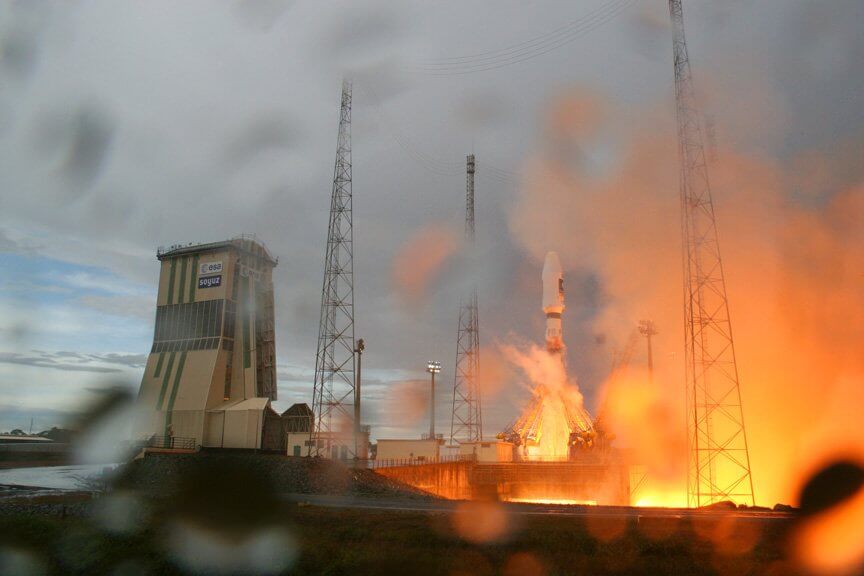The first rocket carried the first two satellites in the Galileo series of European navigation satellites

On October 21, satellites were launched from French Guiana for the first time on a Soyuz model rocket built in the same factories in Russia that build the rocket for the Russian Space Agency.
The legendary Russian rocket took off yesterday (21/10/2011) for the first time from the new European launch base in the jungles of the equator in South America. The historic launch of the Soyuz ST-B launcher from French Guiana took place at 10:30 GMT (08:30 Israel time) and its cargo included the first two satellites of the European GPS system "Galileo". A leaking valve delayed the launch by one day.
The smooth launch followed by the ELS launch marked the first time that Sugar launched a missile from one of six launch sites in Russia and Kazakhstan, in accordance with Russian-European cooperation signed in 2004 by the then presidents Chirac and Putin and implemented today.
"Today's launch is an important launch for Europe. We placed the first two Galileo satellites in orbit, which will allow our continent to be positioned as a player in the strategic market of navigation satellites, an area in which there is a lot of economic activity," says Jean-Jacques Durdain, CEO of the European Space Agency (ESA).
The launcher (the "Soyuz" has been a tradition since the beginning of the space age when they were used to launch the Sputnik 1 satellite in 1957 and the first man in space, Yuri Gagarin in 1961. So far, 1,776 launchers of this model have been flown.
The launcher is based on the existing design of the "Soyuz" plus changes designed to meet European safety requirements, and the construction of the ELS launch pad was carried out as a copy of the existing launch pads in Baikonur in Kazakhstan and Plastek in Russia. One significant difference is the construction of a 45 meter high mobile scaffold.
The satellites weighing together 700 kilos were placed side by side inside the upper stage (frigate) on the surface of the Soyuz 2 three-stage rocket. These satellites are experimental models and will be used to test the GPS technology. Two more satellites of this model will be launched in 2012 and they will be the first in a constellation of 30 satellites. The "Galileo" satellites will provide an accuracy of 3 meter, compared to 23 meters in the American GPS system. (Two ignitions of the last stage, one performed three minutes after launch and the other four hours later put the satellites into orbit at an altitude of 20 thousand kilometers. The frigate stage was planned for up to XNUMX ignitions and shutdowns.It is filled with nitrogen tetroxide and unsymmetrical dimethylhydrazine (UDMH).
The launch from the equator makes it possible to improve the performance of the Soyuz launcher by almost 50% from 1.7 tons to almost 3 tons due to the greater rotation of the Earth at the equator. It will also be possible to launch manned missions subject to political approvals from the European Space Agency and Russia. From a technical point of view, the International Space Station can be reached from French Guiana and only the establishment of a ground support system will be required.
The next launch of "Soyuz" is expected on December 16, 2011, so far 17 contracts for launches have been signed at a rate of 2-3 per year.

3 תגובות
Soyuz launched a rocket and not a Zenit.
Soyuz is not a spaceship? Isn't the launcher a Zenit?
It is impossible not to mention the Russian-American-Norwegian-Ukrainian cooperation in Sea-Launch launches
At the equator in the Atlantic Ocean:
http://he.wikipedia.org/wiki/Sea_Launch
The aforementioned collaborations are undoubtedly a new era in the field of launches